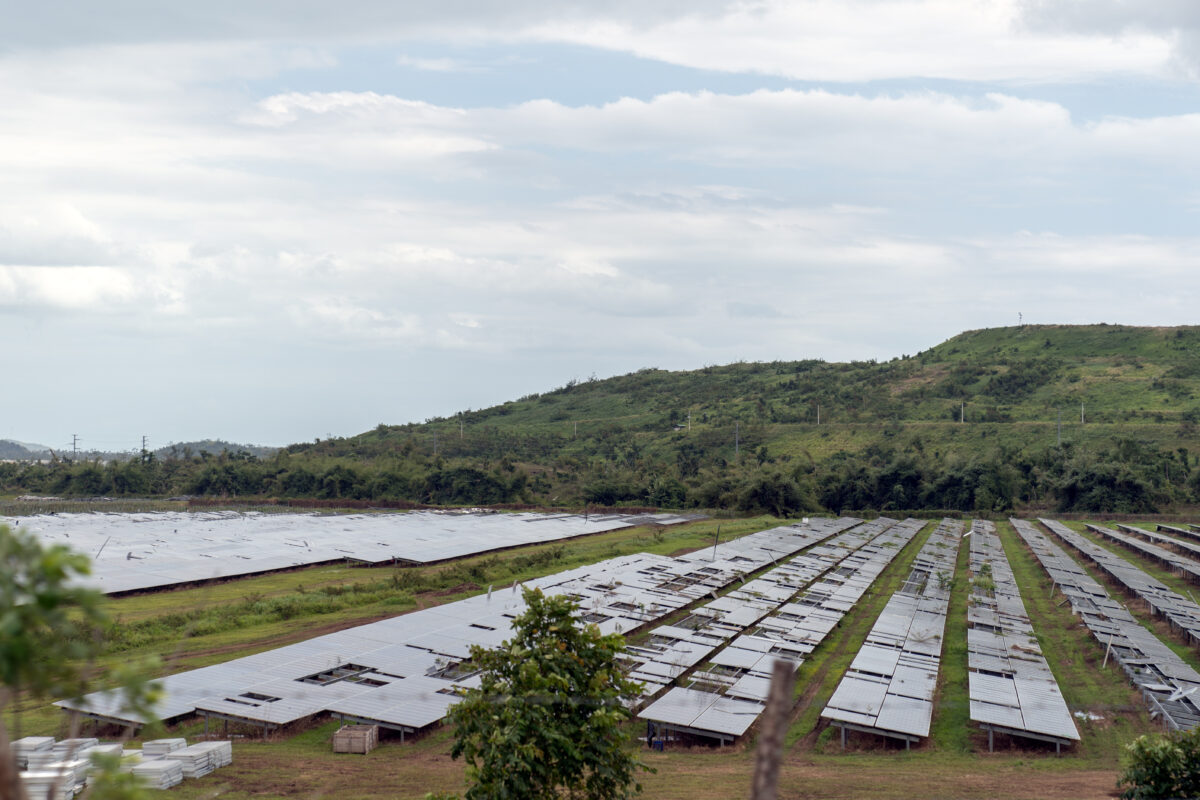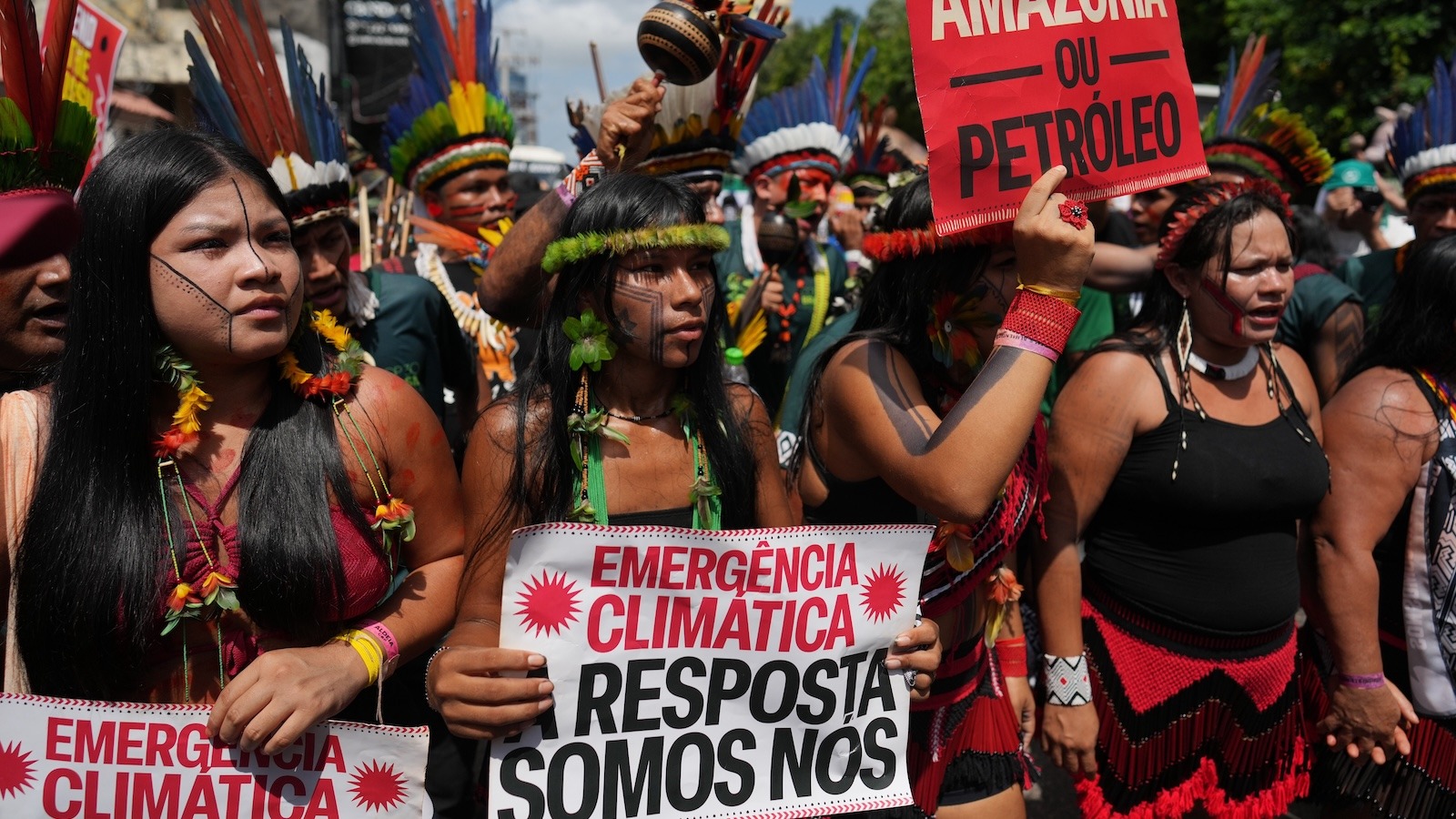“The world’s capacity to generate renewable electricity is expanding faster than at any time in the last three decades,” the International Energy Agency said in a report published earlier this year. This sign of growth offers “a real chance of achieving the goal of tripling global capacity by 2030 that governments set at the COP28 climate change conference.”
In 2022, 29.1% of the world’s electricity was generated by renewable energy resources, and in 2023, renewable capacity grew another 50%. That year, 21.4% of total U.S. energy was produced by renewables, and in April of this year alone, solar, wind, hydropower and biomass provided 31% of the nation’s electricity.
Because renewable energy sources depend on the environment, both the supply of and demand for renewables are affected by climate impacts such as high heat, drought, altered precipitation patterns, flooding, extreme weather and wildfires. Geothermal energy, which depends on heat from the Earth’s interior, is the renewable energy source least affected by climate change impacts, but it provides only 0.4% of U.S. electricity.
“Where there may be impacts on renewable generating facilities, we need to plan for that and prepare for that,” said Romany Webb, deputy director of the Sabin Center for Climate Change Law at the Columbia Climate School. “But we need to think about how climate change will impact the energy system as a whole because, unfortunately, no electricity generating system is immune from the impacts of climate change.”
Webb said that the North American Electric Reliability Corporation and others suggest that fossil fuel-based resources are actually at much higher risk from climate impacts. For example, most fossil fuel facilities are designed to operate at a specific temperature and require water for cooling. As air temperatures rise and increase water temperatures, fossil fuel and nuclear facilities have had to shut down because nearby water bodies were too warm to draw from, or the plants couldn’t release used water into them because that would have exceeded their thermal limits.
How are renewable energy resources affected by climate change?
Solar
Solar provides between 6% and 8% of electricity in the U.S. As heat waves become more frequent, high heat makes solar panels less efficient, and ensuing warmer nights do not allow a solar system’s infrastructure to cool down, stressing it and reducing efficiency. Heat waves also increase the demand for cooling, which strains the grid and can affect the system’s capacity to generate and transmit energy. Smoke from wildfires and added cloud cover during extreme weather events may decrease the amount of solar radiation reaching panels and reduce solar output. Hurricanes have been found to decrease solar photovoltaic generation by 18 to 60% compared with clear days. And tropical cyclones can decrease solar radiation by 80%, even for days after they hit. Any extreme weather can also damage solar energy infrastructure, especially wind hazards.
Wind

Wind power, which provides 10.2% of U.S. electricity, is especially affected by extreme weather events. For example, cyclones can alter the patterns and intensity of wind, leading to fluctuations in the generation of electricity. Intense wind events can force wind turbines to shut down altogether to prevent damage when wind speeds exceed a certain threshold, typically 55 mph. Even a category one hurricane has wind speeds of 74 to 95 mph. Hurricane Maria caused one wind farm in Puerto Rico to lose almost half its turbine blades. Cold temperatures and icing deposit on turbines can reduce wind generation by 10%, according to one study. The 2021 winter storm Uri in Texas resulted in extensive blackouts as wind turbines froze and natural gas and coal providers went offline. Offshore wind towers and foundations can also be damaged by storm surges and sea ice. Overall, researchers have found that 40% of wind energy production could be lost in some regions due to climate change impacts.
Hydropower
Hydropower, which produces 5.7% of electricity in the U.S, and 44% of all global renewable energy (the largest renewable source) is susceptible to heat and drought. Higher temperatures result in shrinking glaciers and reduced snow melt in some areas, and increased evaporation and less precipitation reduce the amount of water in reservoirs and the generating capacity of hydropower.
“I think hydropower is very challenging in a climate-changed world,” said Webb. “We’ve seen that in California, which has traditionally been so heavily reliant on hydropower. There has been such variation due to drought reducing stores there.”
Early snow melt also has a huge impact, she added. “Previously, the snowpack would melt gradually and provide a source of water over an extended period of time. Now, with temperatures rising rapidly, we see earlier and faster snow melt that can just overwhelm the system so you can’t get the most out of it. That means that you have these extended, long summer dry periods.” For instance, in 2021, Lake Oroville in California was at only 35% of capacity, forcing the Hyatt hydropower station, which supplied 60% of the county’s power, to be shut down.

In Zambia, a shorter rainy season and droughts are presently affecting hydropower, which provides 80% of the country’s electricity, resulting in blackouts and power rationing. Ecuador is currently imposing nighttime blackouts and a ban on remote working because the worst drought in decades is impacting the reservoirs that generate its hydropower.
Global electrical energy storage relies almost entirely (99%) on pumped hydro storage, which is also dependent on the availability of water in reservoirs. It generates power by storing water in a reservoir at a higher elevation, then releasing it through turbines to generate electricity.
Changes in precipitation, runoff and river flow can also affect hydropower, and extreme rain and floods can damage dam infrastructure. And while floods and storms may increase hydropower’s resources, the gains are offset by droughts and heat waves.
Biomass
Biomass energy, which provides 1.1% of U.S. electricity, is produced through the combustion of wood, agricultural residue, plant and animal waste and other organic material. It can generate heat or electricity directly or be turned into biofuels. Climate change will affect temperatures, rainfall patterns and CO2 levels, and make droughts and wildfires more likely, all of which will affect biomass production by damaging crops and forests, altering growth rates, growing seasons, soil chemistry and microbes, and by increasing pests and crop diseases.
Extreme weather can also physically damage crops as well as the biomass energy generating infrastructure. One study found that a global average temperature increase of 1°C to 2°C would result in the decrease of 14% to 35% of all remaining species, resulting in the extinction of many. This reduction in biodiversity will affect biomass’s energy potential.
The energy system as a whole is vulnerable
Our renewable energy resources, as well as the overall grid and energy infrastructure, need to be ready to deal with climate impacts—but they aren’t. Because much of the system is old and was largely built for temperatures and weather conditions that prevailed in the past, it is vulnerable to climate change impacts. Hotter temperatures not only mean higher demand for electricity for cooling, which stresses the grid, they also cause power lines to sag and reduce their carrying capacity and efficiency. High temperatures also stress transformers and other equipment, decreasing their lifespan. Hot nighttime temperatures prevent transmission lines from cooling down, adding to their stress. And extreme weather events such as storms and floods can jeopardize energy generation infrastructure and damage power lines.
In addition, climate change impacts will likely cause mismatches of supply and demand in many parts of the world, particularly where the energy system is more dependent on renewable energy, according to one study. For the smooth and consistent operation of energy systems, supply and demand sides need to match. When they don’t, power outages and a cascade of consequences, such as delayed access to energy and higher prices, could result.
Solutions for energy system resiliency
The solutions to the energy system challenges are known but have yet to be sufficiently implemented.
Distributed and diversified energy
Distributed energy systems—where small-scale electricity generation and storage are located closer to users—can help increase resilience and incorporate renewable energy. For example, microgrids could generate and distribute energy from a variety of renewable sources such as solar panels, wind turbines and energy storage systems. Because they are less dependent on one power source, they are not as susceptible to single incidents of failure that might result from extreme weather. In addition, they can operate alone or be connected to other modular units or the larger grid, so they can draw on other power sources during an emergency.
Having a mix of energy resources is also key. “Each energy-generating facility is impacted by climate change and each impact is different,” said Webb. “That means we can actually achieve quite a lot of reliability and resilience just by diversifying the energy mix.”
Balancing supply and demand

Smart grids, often integrated into microgrids, use sensors, smart meters and real time monitoring and control to optimize electricity generation and transmission. They can help manage the supply and demand challenges of renewable energy sources and even out variability. They can also incorporate energy storage technology to quickly respond to imbalances between supply and demand in the system and help stabilize the grid.
Smart grids also enable demand side management, a strategy to shift patterns of energy use according to supply and demand. When demand for electricity is high because of a heat wave, for example, demand side management may have agreements with high energy users to turn off some equipment or use incentives such as lower electricity rates to encourage consumers to use less energy. This can increase the resilience of the energy system by helping to balance supply and demand.
Making infrastructure more resilient
The entire energy system, including renewables, needs to be made more resilient to climate impacts. This entails strengthening and hardening all structures, conductors and poles. New technologies can make renewable energy resources more adaptable. For example, some wind turbines have variable speeds, and some are made taller to reduce vulnerability to wind variability. Wind speed detectors and sensors on the turbine, blades or tower could help the turbine predict wind conditions. Some nacelles—the brains of the turbine—have heaters to deal with the cold; some turbines are equipped with de-icing products in their rotors to prevent ice buildup and others can detect ice on their blades and shut down until it melts. Wind turbines are also being designed to withstand typhoons by adjusting the pitch or bend of their blades. And some solar cells are being developed that tolerate higher temperatures.
Better planning
Planners need to link their climate, advanced weather forecasting and energy system models to have a comprehensive understanding of the risks and resilience of the overall system. They also need to consider siting, carefully choosing where facilities are located to minimize risks from storm damage or other extreme events.
“Many utilities have yet to really plan for the impacts of climate change in a sort of comprehensive, system-wide way,” said Webb. “It’s not just that they’re ignoring climate risks to renewables, we see utilities ignoring climate risks across the board.”
While climate change poses risks to renewable energy facilities, fossil fuel systems are jeopardized by the same impacts, so the vulnerabilities of renewable energy should not be a reason to delay the transition to clean energy, which will reduce climate-related risks by reducing greenhouse gas emissions.
“We see so much misinformation about renewable energy generation and the impacts it will have,” said Webb. “There is a risk that, as we have this growing recognition of the vulnerabilities of renewable energy systems to climate change, it just feeds into the narrative that we shouldn’t be making the transition [to renewables].”
“In fact, the opposite is true,” she said. “If we don’t make the transition, we will have a much less reliable and resilient energy system.”
Source link
Renée Cho news.climate.columbia.edu



